| Java Sea: Royal Thai Navy
The King’s Ships, Part One
by Mike Bennighof, Ph.D.
July 2024
 Unlike her neighbors, Thailand never came under European colonial rule, always maintaining her independence though at times coming under foreign influence. One of the trappings of an independent nation is a navy to “show the flag,” and in 1862 Siam (as she was then known) entered the age of steam by purchasing a small yacht in Germany. Five more steam-powered warships were bought in France in 1865, and some of these craft would continue in service until the early years of the next century. Unlike her neighbors, Thailand never came under European colonial rule, always maintaining her independence though at times coming under foreign influence. One of the trappings of an independent nation is a navy to “show the flag,” and in 1862 Siam (as she was then known) entered the age of steam by purchasing a small yacht in Germany. Five more steam-powered warships were bought in France in 1865, and some of these craft would continue in service until the early years of the next century.
Through the first decades of the 20th century the Navy depended on foreign officers, including many Danes even after the fleet’s Danish commander was recalled to Copenhagen for “compromising Denmark’s neutral status” by ordering his Thai sailors to open fire on French warships in 1893. By the 1920s the officer corps had a greater number of Thais, and the sailors were uniformly of local origin.
“I was told by residents,” reads an unnamed American naval intelligence officer’s report from 1920, “that the Navy was considered inefficient, badly trained and not prepared for the emergencies of war.”
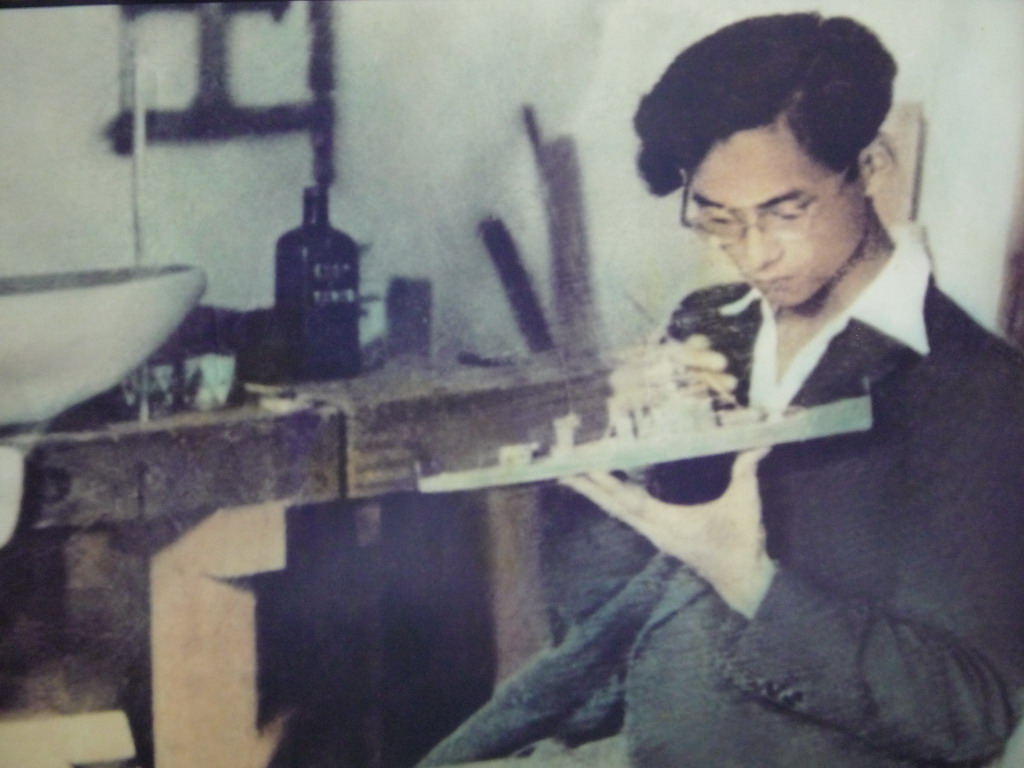
A young King Bhumibol the Great paints a model of Sri Ayuthia.
Things began to improve afterwards, though the Army continued to receive preferential treatment. The Navy bought a used destroyer from the British in 1920, and a used sloop in 1923. The next year the Siamese ordered a small armored gunboat from the British Elswick yard, named Ratanakosindra. A pair of armored gunboats, more like low-freeboard monitors, had been ordered in 1914, displacing 1,070 tons with four six-inch guns in two twin turrets. The first ship was broken up soon afterwards to clear the slipway for vital wartime projects, and the second was never begun.
The Siamese ordered Ratanakosindra again ten years later, to a smaller and therefore less costly design that reduced the number of main guns from four to two and lowered the speed to just 12 knots. She was an odd-looking little ship, displacing just 886 tons and carrying her two six-inch guns in fully-armored, enclosed turrets fore and aft. Though she looked much like the British coastal monitors of the Great War, she was in theory at least designed for operations on the open sea with a low freeboard but also a raised forecastle. She was oil-fired, with old-style triple-expansion engines.
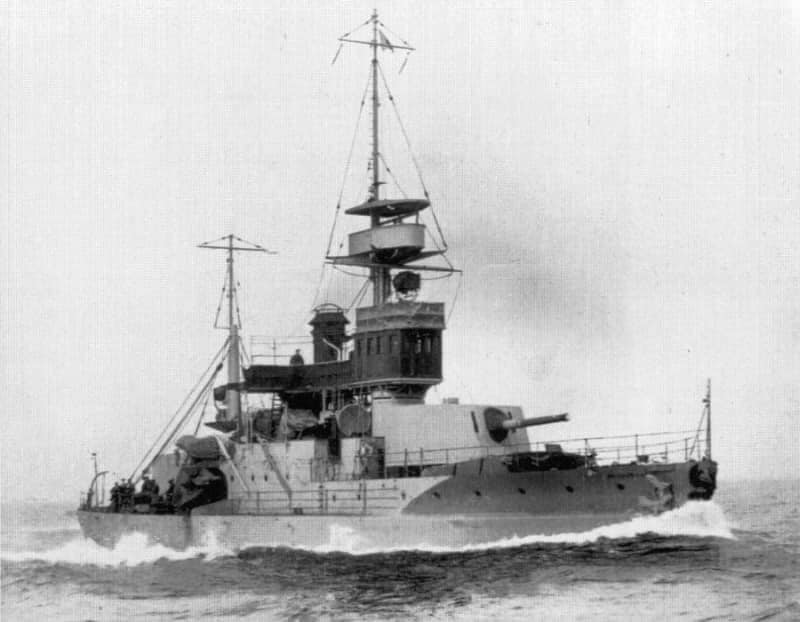
Ratanakosindra moving at speed, such as it was.
Pleased with Ratanakosindra, as her garbage-scow speed was not evident during naval reviews, the Navy ordered a sister ship, Sukhothai, in 1928. These ships formed the core of the Siamese Navy when Col. Luang Phibul Songkhram seized power in 1935. They don’t appear to have been deployed outside of the Bay of Bangkok during the Second World War; they received added anti-aircraft weaponry and would continue in service until the late 1960’s.
The Army’s influence had been growing for the last several years of King Pradjadhipok’s reign, and defense spending increased considerably. Already in 1934, the Navy had ordered a class of nine small torpedo boats from an Italian shipyard, CRDA of Trieste. The 318-ton Puket class, often described as diminutive versions of the Italian Navy’s 600-ton Spica-class torpedo boats (themselves miniaturized versions of the Freccia-class destroyers), were based on the series of 262-ton torpedo boats the shipyard, then known as Stabilimento Technico Triestino (STT), built for the Austro-Hungarian Navy before and during the First World War. They carried some features of the later Italian boats, including their clipper bow and superstructure, and were quite handsome little ships.
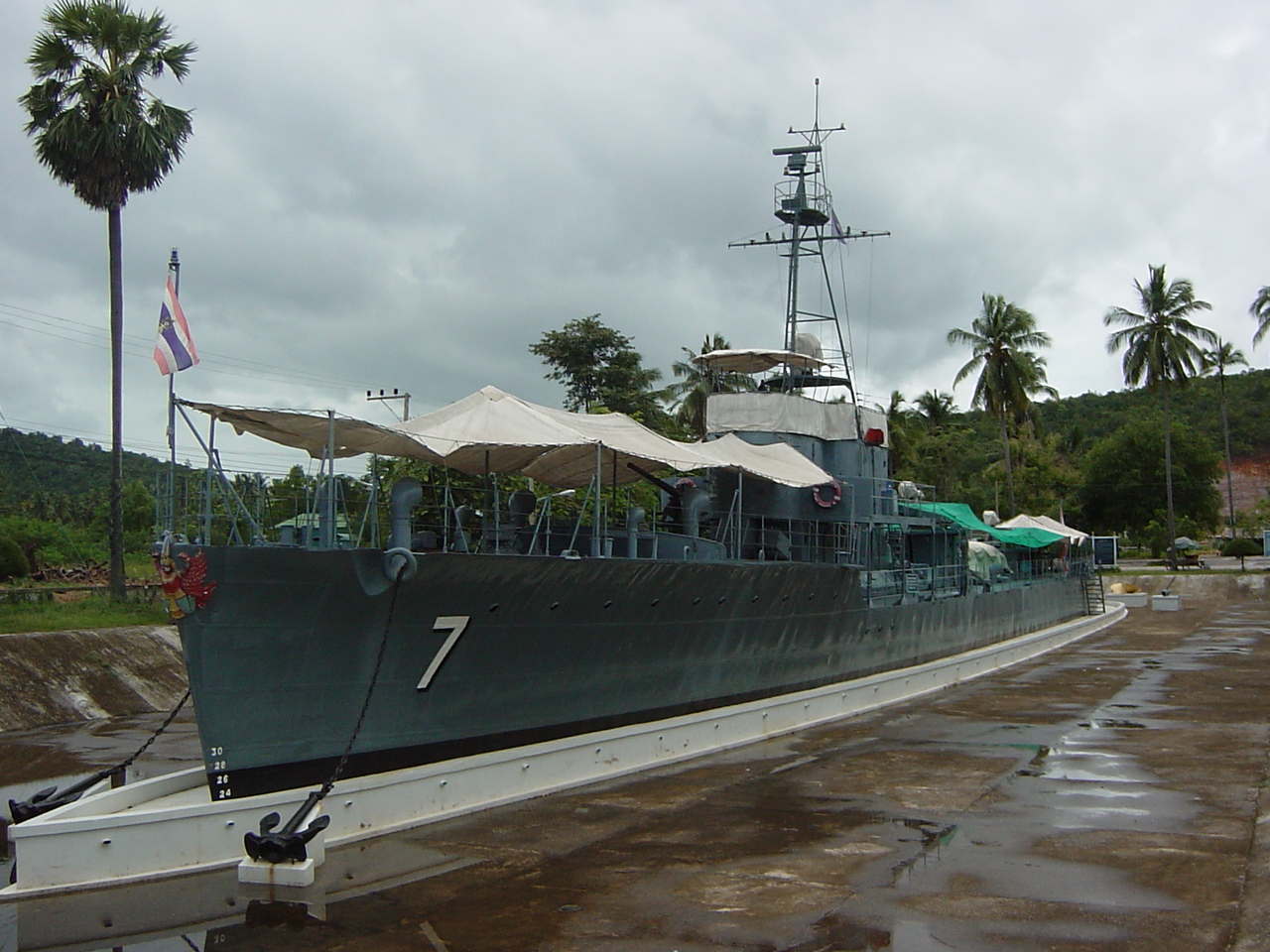
The torpedo boat Chumphon as a museum ship.
The packed a great deal of weaponry on their tiny hulls (all supplied by the British firm Vickers-Armstrong): three 76mm guns and six torpedo tubes, plus two 20mm anti-aircraft guns and four machine guns. They had Parsons turbines and were not very fast (31 knots) considering their role, but had surprisingly good range for their size.
Two boats, Chonburi and Songkhla, were present at the Battle of Koh Chang and lost there. The French claimed a third, Trad, citing her recognition number (11), but Trad was not present and remained in service until 1975, rebuilt along with her six surviving sisters as an anti-submarine escort.
Soon after his installation as military dictator, Songkhram told the Navy to draw up a four-year building program. The Navy should be ready for coastal operations in the Gulf of Siam, aimed at protecting the seaward flank of an invasion of French Indo-China. The Thais placed the program up for international bidding, attracting offers from Italy, Germany, Britain, the Netherlands, and Japan, awarding most of the contracts to Japanese yards.
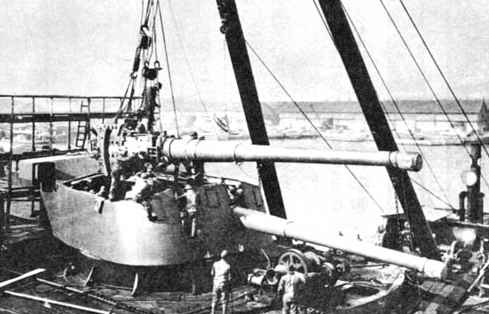
Fitting Thonburi’s 200mm guns.
Two enlarged versions of Ratanakosindra formed the program’s centerpiece. The Japanese yard Kawasaki won the bid with a ship built around a pair of Model D gun turrets originally built as spares for the Myoko class heavy cruisers. The early Japanese heavy cruisers initially carried the Year 3 Type 1 200mm (7.9-inch) gun, upgraded in the 1930’s to the Type 2 203mm (8-inch) weapon. That allowed Kawasaki to enter a winning bid by re-cycling the leftover Type 1 guns and spare turrets.
Sri Ayuthia, laid down at Kawasaki in 1937, and Thonburi, which followed a year later, displaced 2,265 tons and carried four 200mm guns in a pair of turrets fore and aft. Protection was similar to a Japanese heavy cruiser: a 64mm belt and 25mm deck, with 102mm on the turrets and conning tower. They could make 15.5 knots from their German-made MAN diesel engines.
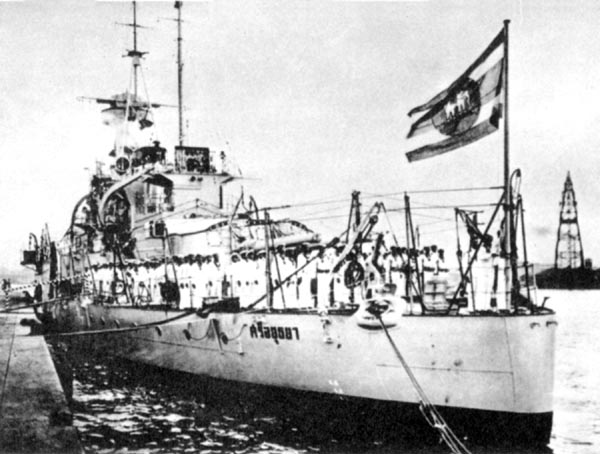
Sri Ayuthia commissions at Kobe, Japan. 26 June 1938.
The pair resembled contemporary Japanese warships, with their deck elegantly curved from the prow aft in place of the “stepped” forecastle common in Western ship designs. Both were delivered in the summer of 1938, with Thonburi completing in just seven months, ahead of schedule and under budget thanks to her scavenged main armament and turrets.
During the brief Franco-Thai War, the two ships usually traded positions every few days, with one stationed forward at Koh-Chang while the other remained at the Sittahip naval base. It was Thonburi’s turn at Koh-Chang when the Franch attacked on 17 January 1941, and she was sunk after a brief engagement. The Royal Thai Navy salvaged the wreck afterwards and dragged it to Sittahip, where it served as a training hulk until scrapping in 1959. Her forward turret and conning tower became a memorial at the Royal Thai Naval Academy. Sri Ayuthia survived the war, but was bombed and sunk by the Royal Thai Air Force in 1951 after a small group of naval officers kidnapped the Prime Minister and took him aboard the ship. A bomb passed through the room housing the captive, who was unhurt, but started a fire in the engine room that could not be put out.
You can order Royal Thai Navy right here.
You can order Java Sea right here.
Sign up for our newsletter right here. Your info will never be sold or transferred; we'll just use it to update you on new games and new offers.
Mike Bennighof is president of Avalanche Press and holds a doctorate in history from Emory University. A Fulbright Scholar and NASA Journalist in Space finalist, he has published a great many books, games and articles on historical subjects; people are saying that some of them are actually good.
He lives in Birmingham, Alabama with his wife, three children, and new puppy. He misses his lizard-hunting Iron Dog, Leopold.
Want to keep Daily Content free of third-party ads? You can send us some love (and cash) through this link right here.
|
